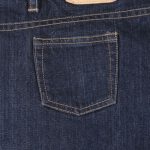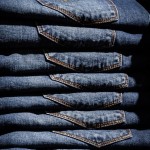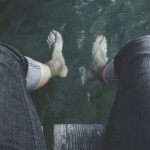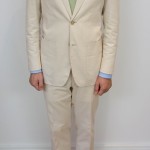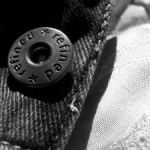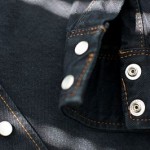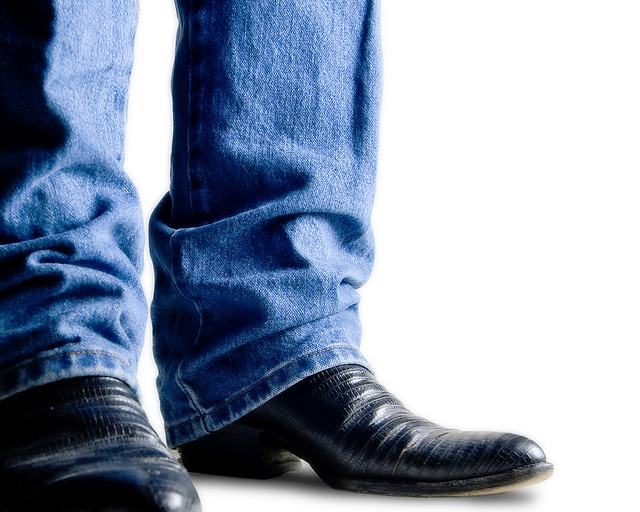
by MakeYourOwnJeans | denims, jeans |
There’s nothing that compares to the comfort and style of a good pair of denim jeans. While fashion trends come and go from year to year, jeans remain a staple garment found in nearly every man and woman’s wardrobe. Of course, there’s a good reason for this: you can dress them, dress them down, or find somewhere in the middle. You can even wear jeans with a pair of your favorite boots, which is something we’re going to discuss more of in this blog post. Boot-Cut Jeans The easiest way to wear jeans with boots is to choose the appropriate cut. We’ve talked about this before on the MakeYourOwnJeans.com blog, but it’s worth mentioning again that there are several different cut styles of jeans, including slim, skinny, straight leg, wide leg, and boot. As the name suggests, boot-cut jeans have a larger opening around the ankle, which is used for wrapping over the tops of boots. This creates a natural, easy-on-the-eyes appearance that’s perfect for high-sitting footwear, boots included. Note: if you’re going to sport a pair boot-cut jeans with boots, make sure the jeans go over your boots. Because they are so open around the ankles, this is really the only suitable way to wear them. Straight-Leg Jeans Don’t let the name “boot-cut” jeans fool you into thinking they are they only jeans you can wear with boots. Sure, they are the most popular, but there are several other cuts available from which to choose as well, including straight leg. While many men prefer the look of boot-cut jeans with boots, women often prefer straight leg. It contours...
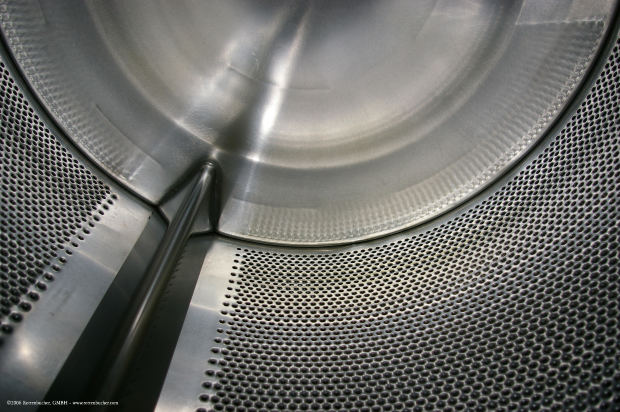
by MakeYourOwnJeans | denims, jeans |
Most people toss their dirty jeans in the washing machine without thinking twice. Heck, even I’m guilty of doing this. But this may not be the best solution, as noted by the Robert Schaeffer, the owner of a premium denim manufacturing company, shop and repair service based in Los Angeles, California. Schaeffer isn’t a newcomer to the denim trade. He’s been importing denim from Japan since 2009, selling his indigo-dyed jeans for a hefty sum of $265 per pair. He may not be quite as known in the trade as someone like Levi Strauss, but he’s still a notable name who’s often associated with high-end denim. According to Schaeffer, you should always wash your blue jeans inside out using the lightest cycle possible. Depending on the washing machine, this may be a setting called “gentle,” “delicate,” or even “handwash.” He adds that blue jeans should be washed with a particular type of soap, recommending a product called Dr. Bronners. “We suggest using a soap called Dr. Bronner’s. It’s a castile hemp soap that you can use on your hair, your face, and your clothes. It goes in your machine and it doesn’t create suds.” said Schaeffer. Another tip Schaeffer offers is to stand by your washing machine when you initially turn it on. Why is this important? According to Schaeffer, removing the jeans after just a couple of minutes in the spin cycle preserves their appearance and structural integrity while still washing away the dirt and debris. After your jeans have knocked around in the washing machine for 3-5 minutes, go ahead and remove them to prevent any damage...
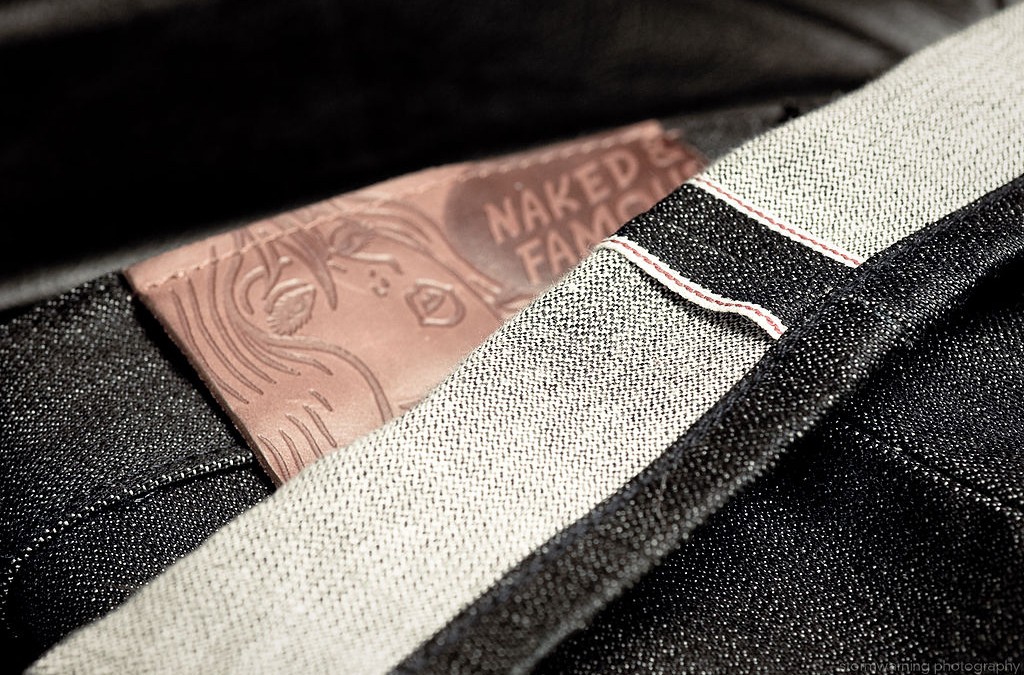
by MakeYourOwnJeans | denims, jeans |
When researching the different types of denim, you may come across a term called “selvage.” It’s certainly not as popular as dry or raw denim, but many companies still use selvage denim in their products. Selvage denim is a type of cotton twill fabric — just like raw or dry denim — that’s woven together to create a stronger, more durable textile. What makes it unique, however, is the way in which it woven. Selvage denim is created through the use of a single continuous cross-yard called the weft. The person or people creating selvage denim weave the weft back and forth through the warp upright warp beams, never cutting or breaking the single weft. In most cases, the edges feature a contrasting warp, such as red, allowing the creator to see exactly where the weft begins and where it ends. While there are several different methods for creating selvage denim, many people prefer to use shuttle looms. This otherwise simple tool weaves a narrow 30-inch fabric back and forth; thus, creating the unique pattern of selvage denim. Because the shuttle loom uses fabric that’s roughly half the size of a shutlleless loom, longer pieces of fabric are required (roughly three yards at minimum. In an effort to produce more denim and eliminate waste, companies often create jeans using wide denim that have a straight outseam. This allows them to utilize the full width of the fabric, including the edges. Selvage denim is frequently used in the production of premium, high-end jeans, as it shows the finished edges in a contrasting color as opposed to the overlocked edges on traditional...
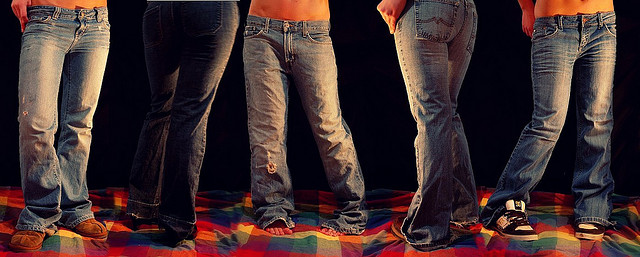
by MakeYourOwnJeans | denims, jeans |
It’s no secret that the majority of jeans produced today are made of denim. Whether they are straight-leg, slim-fit, low-rise, boot-cut, etc., chances are they are made of denim. This has become the defacto material of choice among companies that produce jeans. But what exactly is denim? And why do so many companies prefer it? These are just a few of the many questions that we’re going to answer today. Denim is essentially a type of cotton twill textile that’s characterized by the passing of the wefts. In order for denim to be created, the weft of cotton twill must pass under two or more warp threats; thus, creating a woven fabric with two diagonal crossing patterns. So in other words, denim is nothing more than cotton that’s been wrapped and woven to in a specific manner. As long as the wefts are passed in a honeycomb pattern, it can essentially be called denim. If you look closely at a pair of indigo (dark blue) colored jeans, you’ll notice the inside is actually white. This is somewhat confusing since the outside maintains its distinct indigo color. This color variation is due to the fact that the core of the warp threads remain white throughout the dyeing process. So even though the exterior of the twill threads are indigo, the insides are white. It’s believed that most dry denim is sources from the USA, Zimbabwe and Japan, although there are several other countries known to grow cotton and produce denim. The USA, however, remains the world’s leading supplier of denim, thanks largely in part to its climate and landscape that’s...
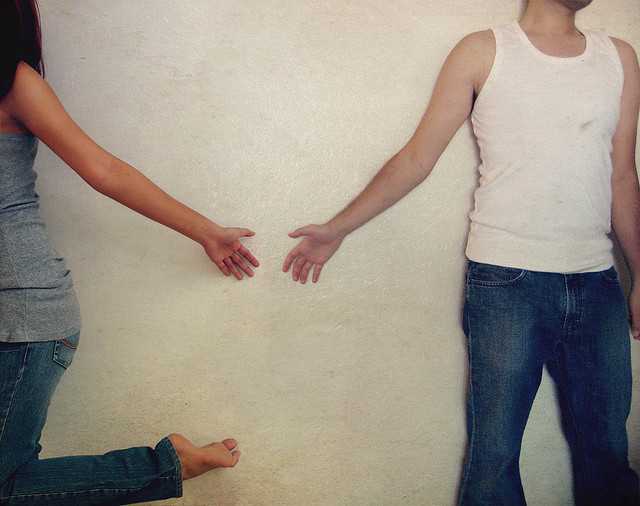
by MakeYourOwnJeans | denims, Fashion, jeans |
In the market for a new pair of jeans? Finding the “perfect” pair of jeans can be grueling, daunting task. You may spend an entire day shopping at various department stores all to no avail. And even if you happen to a find a pair you like, they may not be the right size. To make this task a little easier, we’ve compiled a list of things to consider when shopping for a pair of jeans. Color When shopping for a new pair of jeans, pay close attention to the color. The most commonly worn colors are light blue and indigo. However, you’ll find jeans are available in a wide range of different colors, some of which include red, yellow, black, green, and pretty much every other color under the rainbow. Opting for one of these colorful varieties is a fun way to express yourself while stepping away from the normal trend. With that said, be conscious of the color of jeans and how it affects the rest of your outfit. Fabric Similar to cotton corduroy, denim is the single most commonly used fabric in the production of jeans. It’s soft, durable, long-lasting and inexpensive, making it the ideal choice for jeans. However, jeans are also available in a cheap, coarse type of thick cotton cloth, known as dungaree. Dungaree jeans were popular back in the 1700-1800s in India, but they’ve since been replaced with denim. You can still find dungaree jeans available for sale, although most companies have switched over to denim. Cut You can read more about the different jean cuts by checking out some of our...
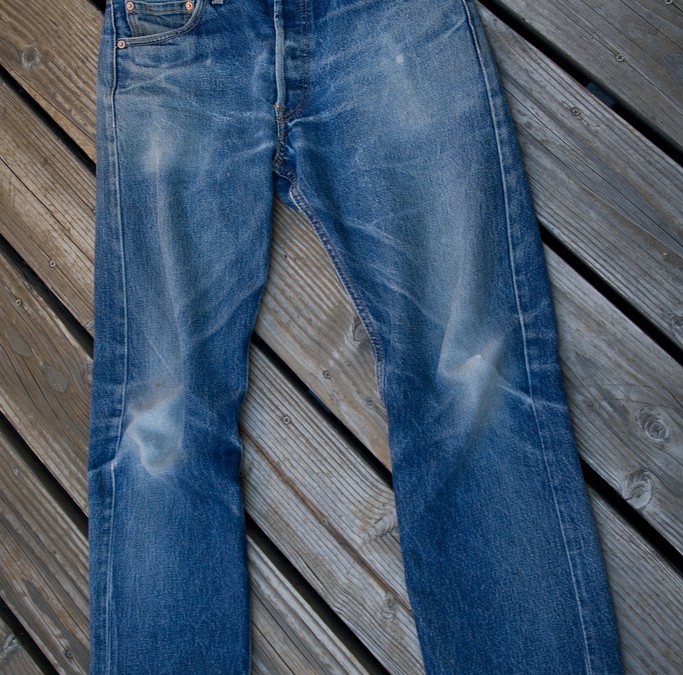
by MakeYourOwnJeans | denims |
No matter how hard you try to prevent it, you will eventually spill something on your favorite pair of denim jeans that leaves a stain. Whether it’s a splash a coffee during your morning commute, ketchup from a hotdog at lunch, or paint from an arts and crafts project, stains are bound to happen. It’s discouraging to say the least when you notice a discolored patch on your favorite pair of jeans, but the good news is that you can often spot-treat them by following some simple steps. Blot The Stain First and foremost, blot the stained area on your jeans using a clean washcloth or paper towel as soon as you notice it. The purpose of this is to remove as much of the liquid/material causing the stain as possible. This isn’t going to completely remove it, but it will lessen the impact, preserving the integrity and color of your jeans. The key thing to remember, however, is that you want to blot, not rub, the stain; otherwise, you could be doing more harm than good. Cold Water When spot cleaning stains on denim — or most fabrics for that matter — it’s recommended that you use cold water. Some people assume that hot water is more appropriate and effective at removing stains, but in reality it allows the liquid to settle deeper into the fabric. This is why it’s recommended that you only use cold water when spot treating denim. Detergent After blotting the stained area on your jeans, place a small amount of liquid laundry detergent on a cold, damp washcloth and rub the affected area....








